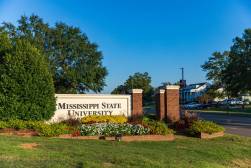Arizona State students are teaching high schoolers AWS cloud

Hundreds of students from low-income school districts are taking AWS cloud computing classes through Arizona State University, before graduating with a high school diploma.
The program, in its second semester, isn’t “watered down” for high school students, Trinity Smith, ASU’s lead teaching fellow, told EdScoop. Students navigate asynchronous lessons and materials that teach them about Amazon Web Services’ cloud technology. ASU students serve as teaching fellows, running virtual sessions to engage with students, answer their questions and show them how to submit coursework through the university’s learning management system.
The course, which awards both high school and college credits, is designed to put students on track to taking the AWS cloud practitioner certification, for free. Smith said it’s a challenge, but one that could pay off not only as an introduction to college-level material, but also to a future career.
“I just had our last office hours session last week and I was really honing in on the fact that [they] completed a real professional course that some college students don’t even pass,” she said.
‘Empowering’ students
Cloud computing consistently ranks at the top of industry lists for the most “in-demand” career skills. And cloud computing was the second-most difficult hiring area according to IT leaders in a 2021 survey, just behind cybersecurity.
Training high school students for cloud computing jobs isn’t a new idea — AWS opened up its cloud curriculum for high schoolers in 2017, and there are several states, including Washington, pursuing partnerships with tech companies to train their students on cloud tech.
ASU’s program is part of broader work by the National Education Equity Lab, which supports higher education institutions and high schools interested in offering courses for credit. While the ASU program offers credit and an opportunity for certification, the focus is mainly letting students know the options they have after graduation, Smith said.
“The way that we engage them in this course to be able to do this course content is by empowering them,” she said. “I remember being in high school. I had maybe one teacher encourage me when I said I wanted to go down a technical career path. It’s not really talked about. You hear in high school — lawyer, doctor, don’t go to college — that’s pretty much it.”
Adding ‘bling’ to AWS foundations
The course relies on prerecorded videos from AWS, but instructors also added additional “bling” to make the materials more exciting, Deputy Chief Information Officer John Rome told EdScoop.
In addition to ASU’s teaching fellows, Rome is one of three faculty members who teach the course. Instructors filmed their own “welcome” videos for each week, walking through what students will learn and how the activities each week help them understand the material. Some of the extra content stars ASU’s mascot, Sparky the Sun Devil.
“We know that we don’t want [it to be] ‘death by long video,’ just more of an intro to the class,” he said. “Then we supplement it with with information that we think is a little more consumable.”
Part of piquing student interest is connecting how the cloud is connected to everyday life, Rome said. The course starts about three weeks of introductory material, walking students through how data and digital storage work — such as a demonstration of how modern smartphones save photos to the cloud. Students also complete writing and research assignments to add context to technical lessons.
Though instructors look to make the material more engaging, the course is still designed as a college-level introduction to cloud computing, Rome said.
“You have to have that fine line of being rigorous, yet also very caring, because this is their first experience in a college course,” he said. “I think we’ve done a really nice job of that, and then the teaching fellows really helped enforce that.”
Connecting a face to the course
Students still receive support from their high school teachers, who take National Education Equity Lab training on overseeing the course and acting as a coach. But ASU’s teaching fellows, all enrolled college students, act as the main face-to-face contact for high schoolers during the course.
ASU fellows run teaching sessions once a week, designed to build a relationship with students and answer any questions.
“We all know Zoom is a really hard way to connect with anybody, especially students,” Smith said. “[The high schoolers have] gone to school digitally off and on for the last two-and-a-half years, just as we’ve had to.”
Fellows also serve as a touchpoint for technical issues. The high schoolers come from Title I schools, which means low-income families make up at least 40% of enrollment. Students often take classes in school computer labs where they have access to a stable internet connection, but there are some technical issues that arise. For example, some school firewalls blocked access to YouTube, where some of the course’s content is hosted.
Teaching fellows design presentations on that week’s content and run their sessions via Zoom. Smith said the goal is to make the sessions as interactive as possible, using tools like the online quiz platform Kahoot, which allows fellows to run live trivia sessions.
But mainly, Smith said, the teaching fellows focus on making students comfortable by sharing more about themselves and encouraging students to open up. Asking a question unrelated to the material — whether it’s silly or ties into future goals — can start sessions and let students learn more about each other, she said.
“I actually have worked in tech since my freshman year at ASU, so I’m about three-and-a-half years into my career already,” Smith said. “With my students, I offer a different lens because I’ve actually worked with people who have this certification exam. I’ve worked in cloud computing before, so I can kind of give my own story on how a technical career has opened up a huge world of possibilities for me as well.”




